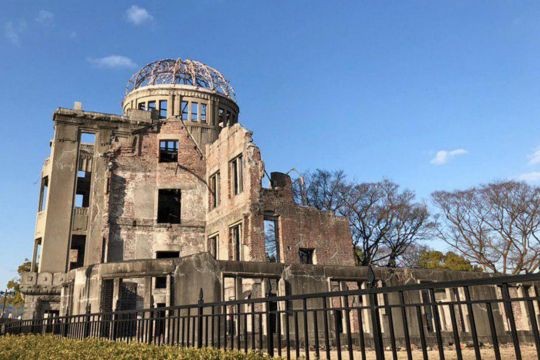Thousands sign Hiroshima petition to save A-bomb buildings

TOKYO - Thousands of people have signed an online petition against the planned demolition of two early 20th-century buildings that remained intact after the atomic bombing of Hiroshima devastated the Japanese city.
A local government official confirmed to AFP on Tuesday (Dec 17) that it had received the petition signed by 12,000 citizens calling for the preservation of the buildings that stand 2.7km from the 1945 blast.
The three-storey red-brick buildings are part of a cluster of four built in 1913 and used to manufacture Japanese military uniforms.
A routine earthquake inspection two years ago revealed they would not withstand a strong tremor.
"There was no choice for us not to take any measures as a collapse could hurt residents in the neighbourhood," said the official, who declined to give his name.
The local authorities own three of the cluster of four buildings and the national government owns the remaining property.
Preserving and strengthening all three buildings owned by the local government would cost 8.4 billion yen (S$103.8 million), they estimate.
They propose to demolish two of the buildings and strengthen the remaining one they own, at a lower estimated cost of between 1.4 billion yen and 3.1 billion yen.
But this has proven unpopular locally, with the online petition now attracting nearly 15,000 signatures.
The Hiroshima Peace Memorial, or Genbaku Dome, is the most famous structure left standing after the world's first atomic bomb exploded on Aug 6, 1945.
[[nid:458106]]
But there are dozens of other buildings that survived the bombing intact within a 5km radius from ground zero.
Japan remains the only country to have been attacked with atomic weapons - with the bombings of Hiroshima and Nagasaki, days ahead of the country's surrender on Aug 15, 1945, to end World War II.
Last month, Pope Francis described the use of nuclear bombs as "a crime", as he took his appeal for an end to atomic weapons to Hiroshima in an emotional meeting with survivors.
At least 140,000 people died after the atomic bomb was dropped on Hiroshima in 1945, with another 74,000 killed after a second bomb was dropped on Nagasaki three days later.